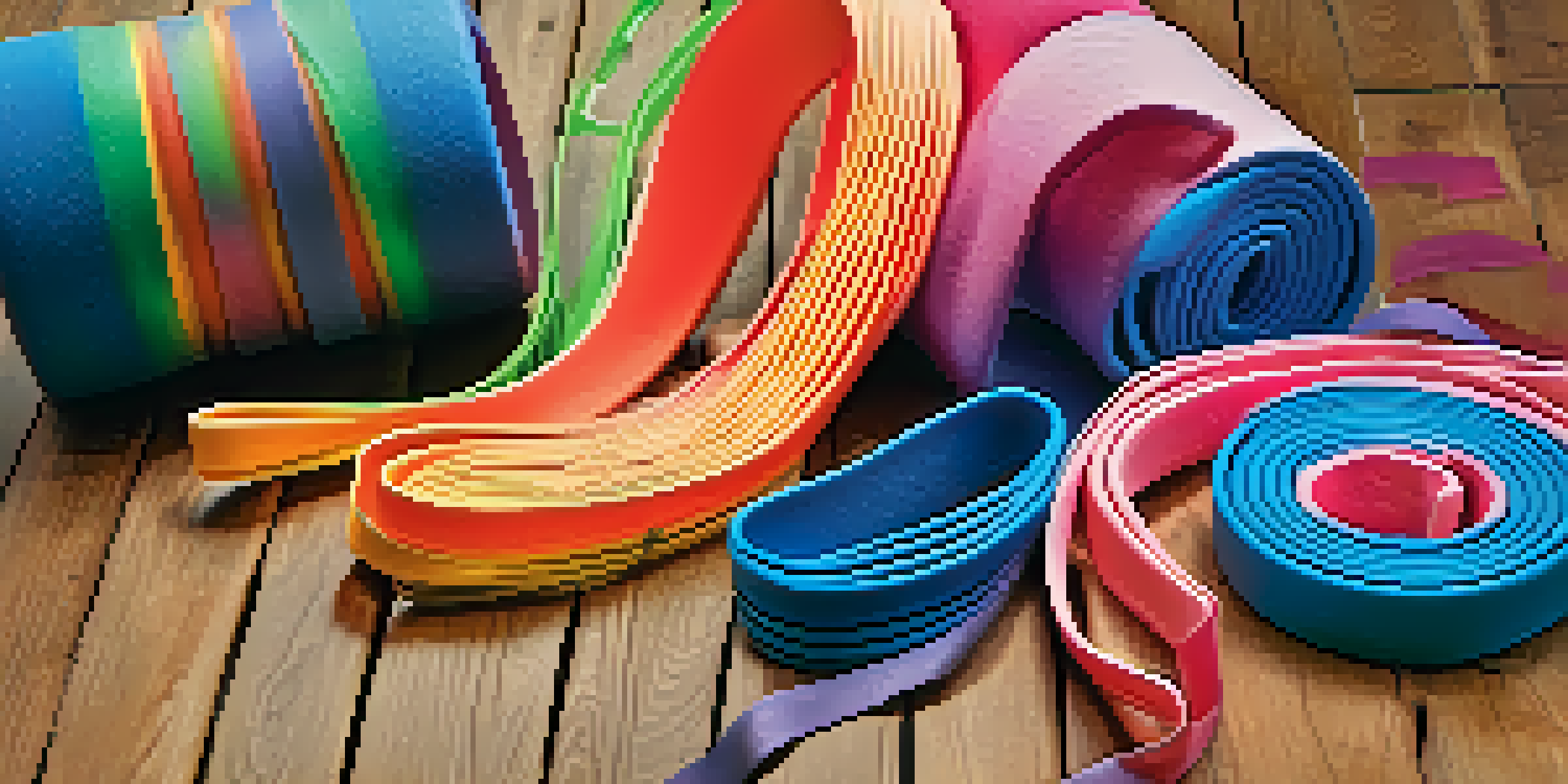Safe Stretching Practices to Enhance Bodybuilding Recovery

Understanding the Importance of Stretching in Recovery
Stretching plays a crucial role in bodybuilding recovery, acting as a bridge between intense workouts and muscle repair. It helps improve flexibility, which can enhance overall performance and prevent injuries. When your muscles are flexible, they can move through a wider range of motion, making each lift more effective.
Stretching is a critical part of any fitness regimen, as it allows for greater flexibility and can reduce the risk of injury.
Moreover, stretching increases blood flow to your muscles, delivering essential nutrients that aid in recovery. This means that after an intense session, dedicating time to stretch can facilitate faster healing and reduce soreness. Think of stretching as a gentle massage that prepares your body for the next challenge.
Additionally, incorporating stretching into your routine can help you develop a mindful approach to your workouts. This awareness not only enhances your physical performance but also fosters a deeper connection between your body and mind, promoting a holistic approach to fitness.
Types of Stretching: Which is Best for Recovery?
There are several types of stretching, but two primary forms stand out for recovery: static and dynamic stretching. Static stretching involves holding a stretch for a period, typically around 15-30 seconds, which is excellent for lengthening muscles after a workout. For example, a seated hamstring stretch can help alleviate tightness after leg day.

On the other hand, dynamic stretching is more about movement and is often incorporated into warm-ups. These stretches are designed to prepare your muscles for action by mimicking the movements you'll perform during your workout. Think of arm circles or leg swings to get your body ready before hitting the weights.
Stretching Aids Muscle Recovery
Incorporating stretching into your routine enhances flexibility, increases blood flow, and reduces soreness after workouts.
Incorporating both types into your routine can provide a balanced approach to recovery. Static stretching can be done post-workout to aid muscle relaxation, while dynamic stretches can serve as an effective pre-workout warm-up, ensuring your body is primed and ready for the challenges ahead.
Best Practices for Safe Stretching Techniques
Safety should always be your priority when stretching. Start slowly and avoid bouncing, which can lead to muscle strains or injuries. Instead, ease into each stretch, allowing your muscles to gradually relax and lengthen. For example, when stretching your quadriceps, gently pull your heel towards your glutes without forcing the movement.
The body achieves what the mind believes.
Listen to your body and respect its limits. If you feel pain, back off from the stretch instead of pushing through it. Remember, stretching should feel good and promote relaxation, not discomfort. If you're unsure about a particular stretch, consider consulting a fitness professional for guidance.
Lastly, consistency is key. Regular stretching, even on rest days, can lead to long-term benefits, improving your flexibility and recovery process. By making stretching a habit, you'll not only enhance your bodybuilding performance but also cultivate a greater sense of body awareness.
Incorporating Stretching into Your Workout Routine
To reap the benefits of stretching, it's essential to integrate it seamlessly into your workout routine. Start with a dynamic warm-up that includes stretches relevant to the exercises you'll perform. This preparation sets the stage for an effective workout while reducing the risk of injury.
After your session, allocate time for static stretching, focusing on the muscle groups you worked. This cooldown phase helps your muscles transition back to their resting state and can significantly reduce post-workout soreness. Consider using a foam roller as an additional tool to target specific areas.
Dynamic vs. Static Stretching
Using both dynamic stretches as a warm-up and static stretches as a cooldown can optimize your recovery process.
Creating a dedicated stretching schedule can also enhance your commitment. Whether it's a few minutes before bed or a longer session on rest days, find what works for you. Consistency will not only improve your flexibility but also support your overall bodybuilding journey.
Utilizing Props for Enhanced Stretching Experiences
Props like yoga blocks, resistance bands, and foam rollers can significantly enhance your stretching routine. These tools provide support, allowing you to achieve deeper stretches and maintain proper form. For instance, using a yoga block during a forward fold can help you reach comfortably without straining your back.
Resistance bands are particularly useful for dynamic stretches, as they add tension to your movements. This added resistance can help improve flexibility and strength simultaneously. Think of using a band to assist with shoulder stretches, promoting greater range of motion.
Foam rollers are another excellent prop for recovery. They help release muscle tightness through self-myofascial release, which can complement your stretching routine. By incorporating these props, you can tailor your stretching sessions to meet your specific needs and enhance your overall recovery.
Common Mistakes to Avoid When Stretching
Even with the best intentions, it's easy to make mistakes while stretching. One common error is not warming up adequately before diving into stretches. Cold muscles are more prone to injury, so always begin with a light cardio session to get your blood flowing before stretching.
Another mistake is holding your breath during stretches. Focusing on your breathing not only helps you relax but also allows your muscles to release tension more effectively. Instead of holding your breath, try inhaling deeply as you prepare for the stretch and exhaling as you ease into it.
Listen to Your Body While Stretching
Adapting your stretching routine based on how your body feels helps prevent injuries and promotes a more effective recovery.
Lastly, don’t rush through your stretches. Each position should be held for a sufficient duration to allow your muscles to relax. Taking your time to enjoy the process not only enhances flexibility but also makes stretching a more enjoyable part of your routine.
Listening to Your Body: The Key to Effective Stretching
Listening to your body is perhaps the most important aspect of effective stretching. Each individual is different, and what feels good for one person may not work for another. Pay attention to how your body reacts during each stretch, and adjust your approach accordingly.
If a stretch feels uncomfortable or painful, don't hesitate to modify it or skip it altogether. There are countless variations and alternatives to explore, so find what feels right for you. For instance, if a traditional lunge stretch causes discomfort, consider a gentle hip flexor stretch instead.

Ultimately, cultivating a mindful stretching practice can significantly enhance your recovery. By tuning into your body’s signals, you’ll not only prevent injuries but also foster a deeper appreciation for your body’s capabilities, helping you grow as a bodybuilder.